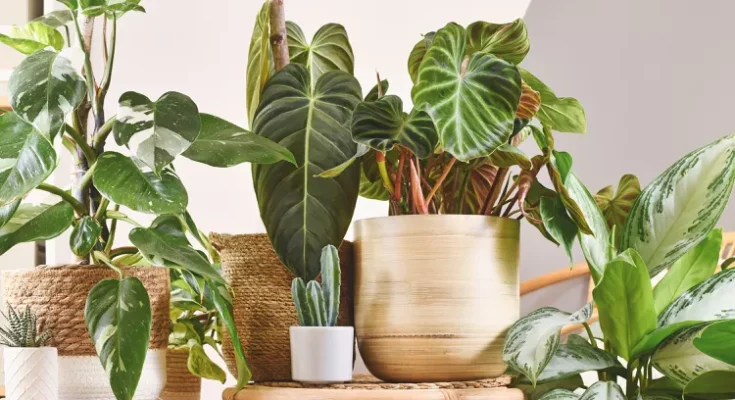Here’s how to move your houseplants to a new house, apartment or dorm.
Moving Day is stressful on everyone, including your houseplants! And if you’re like us, you’re probably emotionally attached to many of them. Maybe you received them for a special occasion, or your Gram gave it to you years ago. Or perhaps you nurtured a plant from a single cutting, and now it’s a huge, lush specimen.
But in order to survive a move successfully, your plants are going to need a little TLC. “Obviously, in nature, plants aren’t moving around, so any change is stressful,” says Justin Hancock, horticulturalist with Costa Farms. “But you can take a few steps to help prepare them for the trip.”
Here’s a step-by-step guide to how to move your houseplants so they’ll survive the trip:
1. Decide which plants to move.
Sometimes you just can’t take them all. “Evaluate your environment in the new space,” says Hancock. “Be realistic about what’s going to work or not.” For example, if you’ve always had large, sunny southern-facing windows, but now you only have north-facing windows, you may need to reassess which ones you’ll take, or invest in a grow light.
Large plants may need to be let go. Is there someone who will appreciate them? Friends, churches, a local community center, or assisted living facilities may welcome your plants if you need to find them new homes.
2. Get rid of the underperformers.
For plants that don’t look their best or those fighting a pest outbreak, it’s time to compost or toss them. Why drag them along if they haven’t performed well for you here? They’re not likely to do much better at the new location if they’ve been struggling all along. Plus, you don’t want to spread pests to your other plants while they’re all packed together in a confined environment, says Hancock.
3. Stop watering.
A few days before moving, stop watering. This will make the pots lighter and will prevent a mess if any of them tip over en route.
4. Bundle them up.
If you’re moving during the cold weather months, wrap your plants well to protect them against frigid temps (40s and lower). You can make a cone-shaped sleeve with cardboard or paper that you tape into place to keep the leaves from getting tangled and to provide cold protection, says Hancock. Staple the top of the cone shut for further insulation.
On frigid days, warm up the car first, then bring your plants out to load, says Hancock. And if it’s super-hot, cool down the car a little first because most houseplants prefer temperatures in the mid 60s to mid 70s.
5. Tuck the plants into a box or crate to transport them.
Try to group all the same sizes of pots together, such as placing all the 6-inch pots in one box, with the 10-inch pots in another. Snug them in tightly to help keep them upright.
6. Give them time to adjust.
Don’t worry if you have a long drive; most plants will do fine up to a week on the road (after all, nurseries ship plants long distances in the back of trucks with no light). Just make sure not to leave them in the car overnight if it’s going to freeze or get blazing hot.
Once you get to your new location, unload ASAP. Many plants will drop leaves at first as they adjust to their new environments. But be patient, give them the kind of light they like, and water as you always do. Most plants are resilient and should bounce back in a few weeks, says Hancock.



